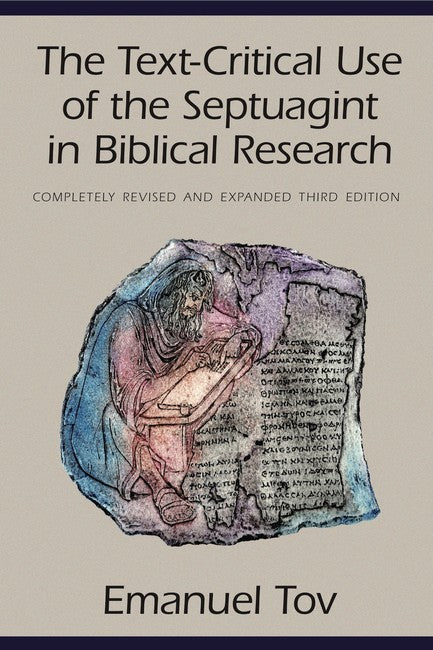Preface
Editions of Textual Sources
Abbreviations
Chapter 1. Introduction: Some Basic Notions
A. The aims of the textual criticism of the Hebrew Bible
B. Collecting variants
C. The reconstruction of individual elements in the original text of the LXX
D. The character of the canon of the “LXX”
E. The categories “literal” and “free”
F. Understanding the LXX
G. Editions
H. Electronic tools
I. The evaluation of the LXX in biblical research
Part I
The Reconstruction of the Hebrew Text Underlying the LXX: Possibilities and Impossibilities
Chapter 2. When to Reconstruct Variants?
A. Exegesis
B. Scribal developments
Chapter 3. How to Reconstruct the Vorlage of the LXX—Positive and Negative Aspects
A. Criteria for retroversion
1. Greek–Hebrew equivalents
2. Intuition
3. Textual probability
4. Linguistic plausibility
5. External support
B. The nature of retroverted variants
1. Some types of reliable retroversions
2. Doubtful retroversions
3. The existence of retroverted variants
Excursus 1:The use of concordances in the reconstruction of the Vorlage of the LXX
Excursus 2:The use of electronic tools in the reconstruction of the Vorlage of the LXX
Excursus 3:endentious palaeographical exegesis?
Chapter 4. The Reconstruction of Elements Not Indicated in the Vorlage of the Translators
A. Vocalization
1. Reconstructing “different vocalizations”
2. The translators’ attitude towards the unvocalized text
3. The reconstruction of the vocalization
4. The grapheme ש
5. The translators and the reading tradition
6. The reliability of the reconstruction
B. Word Divisions
C. Sense Divisions
Chapter 5. Variants, Variants/Non-Variants, and Pseudo-Variants
A. Variants
1. Pluses
2. Minuses
3. Transpositions
4. Differences in words
Excursus 1:Matres lectionis and final letters
Excursus 2:Abbreviations?
Excursus 3:The script of the Vorlage of the LXX
Excursus 4:Variants retroverted from the revisions of the LXX
B. Non-Variants
C. Variants/Non-Variants
1. Connective waw/καί
2. Singular/plural forms of nouns and verbs
3. Pronouns
4. Active/passive forms of verbs
5. Prepositions
6. The article
D. Pseudo-Variants
1. Interchange of similar letters in “difficult” Hebrew words
2. Intrinsically improbable readings
3. Deviations from MT in the LXX causing further deviations in the translation
Excursus:tymological Exegesis
Part II: The Nature and Evaluation of the Hebrew Text Underlying the LXX
Chapter 6. The Nature of the Hebrew Text Underlying the LXX
A. The geographical provenance of the Hebrew text underlying the LXX
B. The relationship between the Hebrew text underlying the LXX and ancient Hebrew witnesses of the biblical text
1. Hebrew scrolls from Qumran
2. The Samaritan Pentateuch
C. Characteristic features of the Hebrew text underlying the LXX
D. Evaluation of the literary evidence in the LXX
Chapter 7. The Evaluation of Retroverted Variants in Biblical Research
A. General
B. The evaluation of readings
C. Some rules for evaluation
Excursus:The evaluation of retroverted variants in the BH series
Chapter 8. The Contribution of the LXX to the Literary Criticism of the Bible
Indexes
Index of authors
Index of biblical passages

